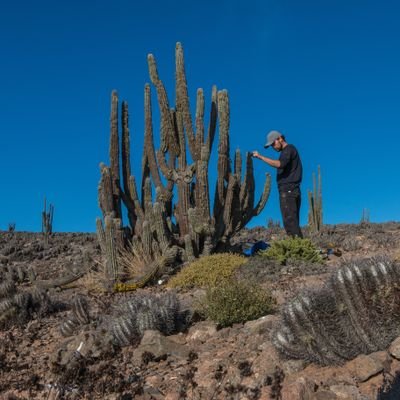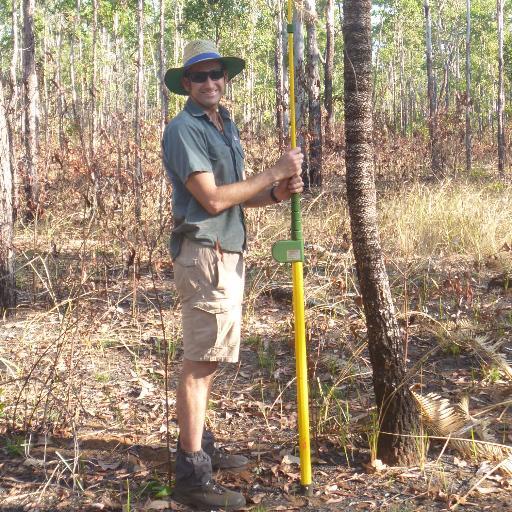
Trish Fleming
@western_webWestern Australian wildlife biologists studying Wildlife Ecology and Biology.
Similar User

@Acanthoplus

@CowanMitch

@MichelleLHall6

@NTay_

@CowenSaul

@brettpmurphy

@AarontheEcolog

@AWMSociety
Feral fox numbers falling as scientists and researchers join annual cull in Southern WA abc.net.au/news/2024-02-2…
Did you know the biggest threat to our wildlife is lack of shelter? Tenaya Duncan is investigating how artificial shelters can keep wildlife safe from predators while they wait for their homes in disturbed landscapes to be restored. ➡️ Learn more: loom.ly/gahyGbA

Do you have bandicoots in your backyard? westernweb.net/2022/05/19/do-… New paper out suggesting how we can design our gardens for these little critters sciencedirect.com/science/articl…
Study shows how diet has transformed the ancient dog into a family pet phys.org/news/2022-05-d… via @physorg_com
Endangered northern quolls expand their range in response to landscape scale feral cat control on Robe River Kuruma (RRK) Country in the Pilbara. RRK rangers jointly working on-country with DBCA on >20 field trips. Offset funds by @RioTinto #WildOz #WAFCWG

Virtual fences to save endangered species - work on Barrow Island test methods to keep threatened and endemic fauna safe on the road: westernweb.net/potential-proj…

Counting the bodies: feral cats and foxes have devastated populations of Australian reptiles, birds and mammals. Every year, about 2.6 billion animals are killed. Not so happy about this. onlinelibrary.wiley.com/doi/10.1111/dd…

Drying land and heating seas: why nature in Australia's southwest is on the climate frontline theconversation.com/drying-land-an… via @ConversationEDU

Everybody loves truffles! especially these Aussie diggers doi.org/10.1007/s10531… @annajmhopkins @NTay_ @KatinkaXRuthrof @consecology @treenabene @GilesHardy1 @meeg_ecology @EdithCowanUni @MUniResearch


Most stray cats die before they turn one, so what's the best way to deal with them? phys.org/news/2021-09-s… via @physorg_com
Wedge‐tailed eagle chick survival is directly correlated with rainfall in arid Australia @Aquila84WA onlinelibrary.wiley.com/doi/10.1111/ae…


Plate-sized meals for introduced predators. Foxes and cats documented to have preyed on one-third of all Australia's native land mammal species. #ThreatenedSpecies @TSR_Hub authors.elsevier.com/c/1dc711R~eL8D…

Introduced to Australia ~150 years ago, the red fox devastated local wildlife. 70% of samples contain mammals, half are native species. Foxes eat everything (cf. dingoes preferring large prey and feral cats small prey) #InvasiveSpeciesWeek @Mammal_Society onlinelibrary.wiley.com/doi/10.1111/ma…

Large-scale tree declines: specialist pollinators and rare animal species lose habitat, while common and invasive species benefit. Global meta-analysis of tree decline impacts on fauna @MUniResearch @Tree_Mortality #treemortality doi.org/10.1111/brv.12…

Turn the tide for native wildlife conservation through a PhD in predator ecology with the Centre for Climate-Impacted Terrestrial Ecosystems. Contact Trish Fleming at the Harry Butler Institute to find out more: murdoch.edu.au/research/hbi/c…

Third PhD paper out today in Journal of Morphology @aNATomy_Lab @TravouillonK @western_web A review of PCSA methods. Check it out here -> onlinelibrary.wiley.com/doi/abs/10.100…
Anatomy of tendons is always so amazing, but look what happens when you add extra fingers! #polydactyly anatomypubs.onlinelibrary.wiley.com/doi/10.1002/ar…

anatomypubs.onlinelibrary.wiley.com/doi/10.1002/ar… super fun things from the anatomy freezer... no, kangaroos do not usually have SEVEN fingers!!

United States Trends
- 1. Kash 598 B posts
- 2. Houston 31,4 B posts
- 3. Texas 177 B posts
- 4. #HookEm 15 B posts
- 5. Iowa State 9.174 posts
- 6. Fauna 78,6 B posts
- 7. #BYUFootball N/A
- 8. #LAGalaxy 1.674 posts
- 9. #SurvivorSeries 268 B posts
- 10. Aggies 12,4 B posts
- 11. Ewers 10,1 B posts
- 12. Elko 3.252 posts
- 13. McCabe 37,1 B posts
- 14. Wray 50,4 B posts
- 15. Junior Bergen N/A
- 16. Norvell 9.948 posts
- 17. Klein 12,2 B posts
- 18. Oregon 35,4 B posts
- 19. MLS Cup 3.646 posts
- 20. Sark 4.865 posts
Something went wrong.
Something went wrong.





























































































































